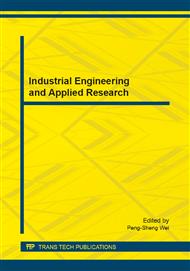p.262
p.268
p.274
p.278
p.285
p.292
p.296
p.300
p.304
Study on the Flow Field of an Undershot Cross-Flow Water Turbine
Abstract:
The purpose of this investigation is to research and develop a new type water turbine, which is appropriate for low-head open channel, in order to effectively utilize the unexploited hydropower energy of small river or agricultural waterway. The application of placing cross-flow runner into open channel as an undershot water turbine has been under consideration. As a result, a significant simplification was realized by removing the casings. However, flow field in the undershot cross-flow water turbine are complex movements with free surface. This means that the water depth around the runner changes with the variation in the rotation speed, and the flow field itself is complex and changing with time. Thus it is necessary to make clear the flow field around the water turbine with free surface, in order to improve the performance of this type turbine. In this research, the performance of the developed water turbine was determined and the flow field was visualized using particle image velocimetry (PIV) technique. The experimental results show that, the water depth between the outer and inner circumferences of the runner decreases as the rotation speed increases. In addition, the fixed-point velocities with different angles at the inlet and outlet regions of the first and second stages were extracted.
Info:
Periodical:
Pages:
285-291
Citation:
Online since:
August 2014
Authors:
Price:
Сopyright:
© 2014 Trans Tech Publications Ltd. All Rights Reserved
Share:
Citation:


